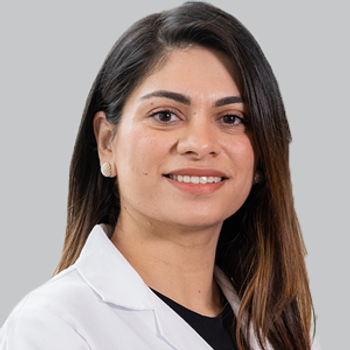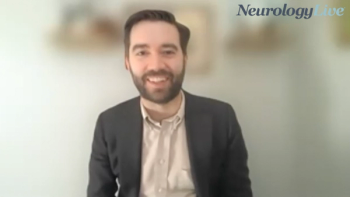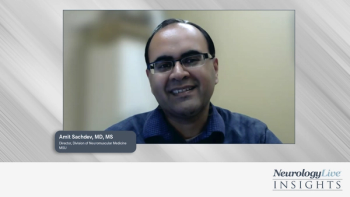
Top News for International Epilepsy Day
In honor of International Epilepsy Day, held February 13, 2023, get caught up on some of the latest news in epilepsy as the NeurologyLive® team shares some of our data updates and expert insights.
In recent months, the NeurologyLive® team has been covering the news and conducting interviews with experts on the latest updates in the clinical care of individuals with epilepsy, including those with poststroke seizures, pediatric epilepsy, focal seizures, and partial-onset seizures.
For International Epilepsy Day— February 14, 2023—the team has culminated some of the biggest pieces of news and insightful exchanges with physicians to offer updates on new developments in literature and expert opinions about stroke to spread awareness on the prevention and treatment of the condition.
Click here for more coverage of the
Expert Insights
Latest Literature
Antiseizure Agent EQU-001 Shows Safety, Tolerability, and Preliminary Efficacy in Phase 2 Study
Topline results from a dose-finding, phase 2 clinical trial (NCT05063877) assessing Equilibre’s antiseizure medication EQU-001 showed that the therapy was safe and well tolerated at all tested doses through 60 mg QD.1 Conducted in the US and Israel, the EQU-201 study evaluated EQU-001 in doses of 10 mg, 20 mg, 40 mg, and 60 mg once daily relative to placebo in a cohort of 43 individuals with epilepsy with focal seizures. Over the course of a 12-week treatment period, no treatment-related serious adverse events (AEs) were reported, all AEs were grade 1 and 2, and AEs occurred at similar rates to that seen in the placebo group.
Although the study was designed to assess safety and tolerability of EQU-001, there was an overall dose response trend in increasing median percent seizure reductions, except for the 40 mg group. In the modified intend-to-treat (mITT) population, the median percent reduction in focal seizures per 28 days was 41.6% (95% CI, –5.6 to 83.5), 7.4% (95% CI, –51.3 to 29.1), 19.9% (95% CI, –33.6 to 50.2), 12.3% (95% CI, –32.1 to 83.1) and 5.8% (95% CI, –110.0 to 36.9) in the 60 mg, 40 mg, 20 mg, 10 mg, and placebo groups, respectively.
In total, 88.6% of patients across all treatment arms and 75% in the placebo arm completed the study, with 37 patients moving on to the open-label extension. One individual in each of the 40 mg and 60 mg treatment arms discontinued the study because of an AE. Patients in the placebo arm also showed higher rates of infections, occurring in 37.5% vs 11% of those on EQU-001 and 0% in the 60 mg treatment arm.
Systematic Study Identifies Association Between Incident Parkinson Disease and Antiepileptic Drug Use
Research using data from the UK Biobank (UKB) found an association between antiepileptic drug (AED) prescription use and incident Parkinson disease (PD) diagnosis.2 Carbamazepine, lamotrigine, levetiracetam, and sodium valproate, the 4 most commonly prescribed AEDs in the United Kingdom, were used as the exposure. Logistic regression models, adjusted for age, sex, and Townsend deprivation index, were used to calculate odds ratios (ORs) and 95% Cis.
Data extracted in June 2021 showed an association between AED use and incident PD, as explained by ORs of 1.80 (95% CI, 1.35-2.40). Specifically, sodium valproate showed the highest OR (3.82; 95% CI, 2.41-6.05), followed by levetiracetam (OR, 3.02; 95% CI, 1.51-.6.05), lamotrigine (OR, 2.83; 95% CI, 1.53-5.25), and carbamazepine (OR, 1.43; 95% CI, 0.97-2.11). The odds of incident PD were higher among individuals prescribed more than 1 AED and among individuals with higher number of issues.
Of those with a PD diagnosis, 63.7% had a record of 2 or more issues of a PD medication. Among these individuals, 96% had an HES-coded PD diagnosis, while the remaining 4% were self-reported. With the more stringent definition of PD, strong evidence of an association remained for sodium valproate.
Growing Brivaracetam’s Potential Through the Adaptive, Dose-Finding EXPAND Study
Brivaracetam (BRIVIACT; UCB), an FDA-approved therapy for pediatric patients with partial-onset seizures, is currently being assessed in an innovative, adaptive trial called the EXPAND trial (NCT04666610). It includes individuals with childhood absence epilepsy (CAE) and juvenile absence epilepsy (JAE), 2 conditions for which treatment options remain limited. The trial began in 2021 and consists of a dose selection and assessment for futility stage followed by an optimal dose stage after interim analysis.
The 2-stage design allows the investigation of 2 potentially efficacious doses of the therapy, where one dose is dropped in favor of the other with a better benefit-risk profile. The trial is expected to be completed in 2024, and both stages include an up to 2-week screening period, a 2-week placebo-controlled period, and an 11-week active treatment period. The active treatment period includes 10 weeks of initial treatment followed by a 24-hour electroencephalogram (EEG) and an additional week of active treatment for the 24-hour EEG assessment.3
Investigators will assess the percentage of participants who met the criteria for seizure freedom within 4 days prior to or during the 24-hour ambulatory EEG at day 14 as the primary outcome measure. Every 24-hour EEG will include hyperventilation as a standard provocation test at the beginning of the EEG. The parallel-group, multicenter center trial is expected to include 160 participants, aged 2 to 25 years, with a diagnosis of either CAE or JAE, as defined by the International League Against Epilepsy criteria.
REFERENCES
1. Equilibre Biopharmaceuticals announces positive topline results from phase 2 clinical trial of EQU-001 (NCT05063877) for safety, tolerability, and preliminary efficacy as adjunctive therapy for focal seizures in adults with epilepsy. News release. Equilibre Biopharmaceuticals. January 30, 2023. Accessed January 31, 2023. https://www.biospace.com/article/releases/equilibre-biopharmaceuticals-announces-positive-topline-results-from-phase-2-clinical-trial-of-equ-001-nct05063877-for-safety-tolerability-and-preliminary-efficacy-as-adjunctive-therapy-for-focal-seizures-in-adults-with-epilepsy/
2. Belete D, Jacobs BM, Simonet C, et a. Association between antiepileptic drugs and incident Parkinson disease in the UK Biobank. JAMA Neurol. Published online December 27, 2022. doi:10.1001/jamaneurol.2022.4699
3. Bast T, Schulz AL, Floricel F, Morita D, Cleveland JM, Elshoff JP. Efficacy and tolerability of brivaracetam monotherapy in childhood and juvenile absence epilepsy: an innovative adaptive trial design. Epilepsia Open. 2022;10.1002/epi4.12628. doi:10.1002/epi4.12628
Newsletter
Keep your finger on the pulse of neurology—subscribe to NeurologyLive for expert interviews, new data, and breakthrough treatment updates.



































